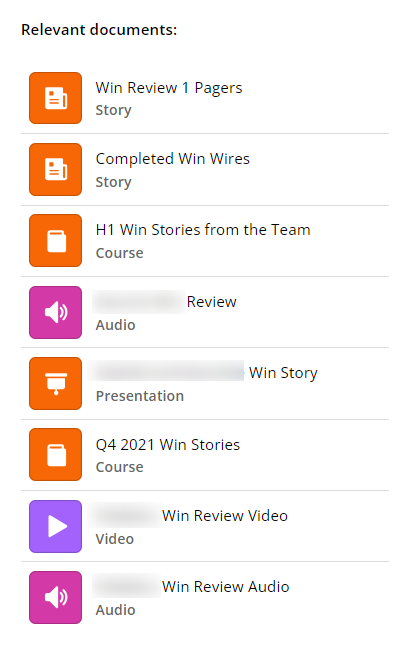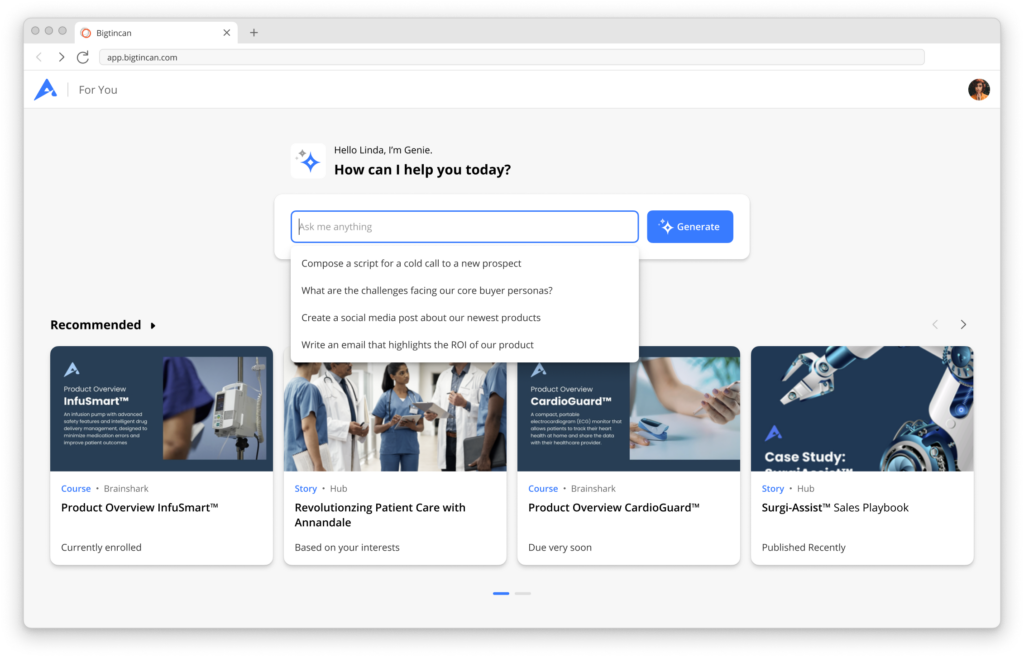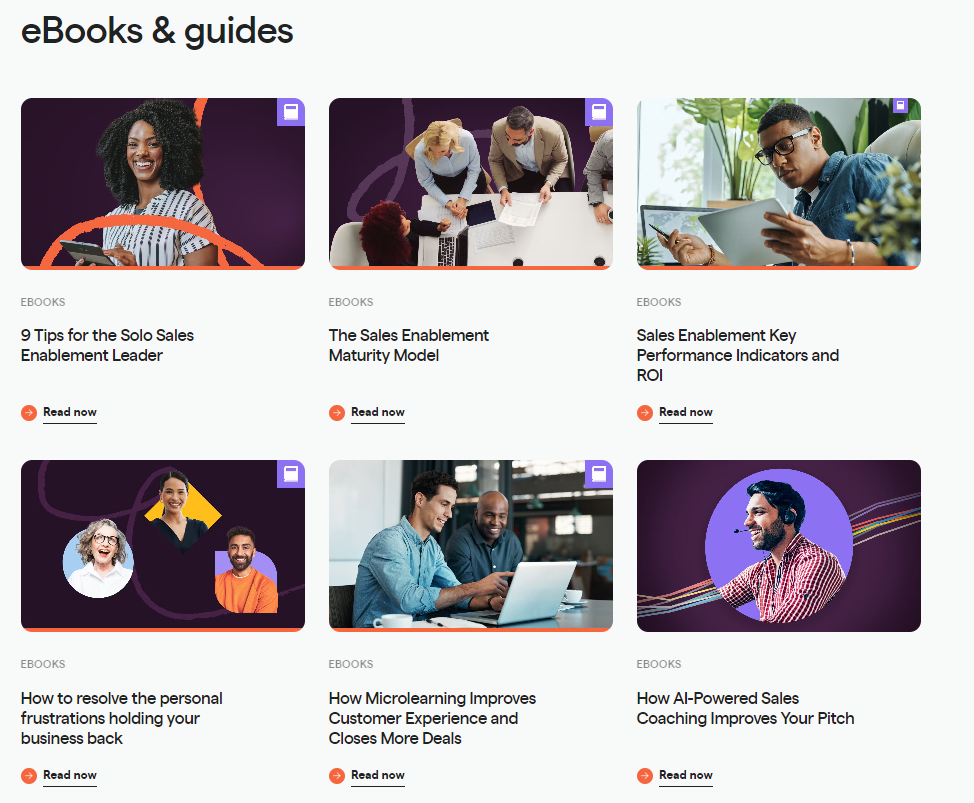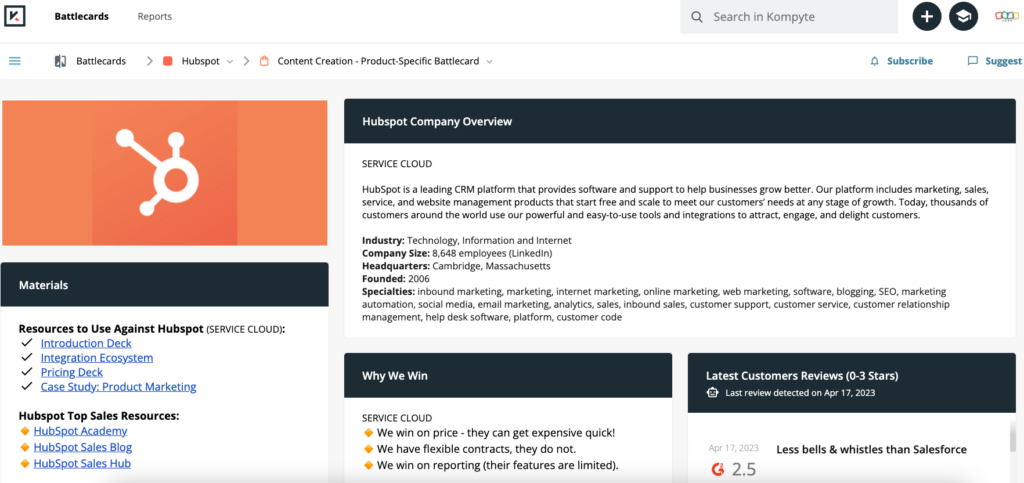Deciding which sales enablement content types to prioritize can be challenging. However, getting this right will ensure your buyers and sellers have the best experience possible.
In my previous article, we spent a lot of time discussing how you go about determining your sales enablement content needs. In this article, we’ll dive into the types of sales content as well as the document types that deliver the most value to your sellers.
Sales asset management and content are part of every sales enablement strategy and should be designed to support the salesperson at each stage of the buyer’s journey. It’s an often overlooked area within organizations, with the majority of the content only serving lead generation tactics.
The type of collateral you should create is dependent on many factors, including the buyer journey, your sales methodology, and the complexity of your sales cycle.
Types of sales collateral
Persona documents
Being a successful seller means having a deep understanding of the business problems faced by your prospects. To help them, you must be able to step into their shoes. This is where persona documents help.
To define your persona document — whether you choose to format them as slides, pages, or spreadsheets — sketch out information like the following to help you visualize and empathize your buyers’ needs:
- Job Title
- Job Description
- Size of their company
- Their primary pain points
- Business problems they’re seeking to solve
- Actions they take to solve these problems
- Where they gather trusted information (channels, analyst firms, websites, thought leaders, etc.)
- Demographic information such as age range, geographic location, perhaps gender depending on relevance to your offerings

Source: Semrush
Case Studies
Case studies, or customer testimonials, are a critical sales enablement content type used — and often requested by buyers — throughout the sales cycle. Testimonials demonstrate to prospects that you’ve worked with other businesses to overcome the challenges they’re currently facing.
Case studies not only display competency but build additional trust with buyers as they demonstrate your ability to work well with other businesses like theirs. You may solve a customer’s problem, but getting them to agree to do a testimonial often shows you were also an excellent business partner.
Case studies can be anonymous, in video form, formal, more casual, or written. It depends on the customer’s preference and the story you have to tell together. Here’s a great example of a video testimonial:
In whichever form you can get them, having a few solid case studies ready to go when buyers eventually ask for them is a great way to ensure your sellers are prepared.
Sales outcome wires
While most teams are familiar with the concept of a win wire, sometimes known as win/loss reports, you should consider creating this sales enablement collateral type for all deal outcomes.

You can create these sales outcome wires as quick videos or simple text documents. Either way, capture:
- How you won the deal or why the deal was lost (do this for both no decision and a decision-based loss).
- If you won, how did you beat the competition?
- If you lost, were you outmaneuvered by the competition, did you fail to sell to value, did you lose to the status quo?
- What could you have done differently to either increase the deal size or win the deal altogether?
- What was the business problem you were working to overcome? Is the product well suited?
- Who else in your organization did you partner with during the deal?
- Who else in the customer’s organization did you partner with during the deal?
- Did you have content at each step of the journey to keep the deal moving forward?
- Was there any training you could have used to improve upon the outcome?
This sort of report will allow your sellers and sales enablement teams to improve their processes and win more deals in the future.
Sales scripts
Sales scripts can provide guidance for conversations and presentations, templates for emails, and process checklists to ensure leads are properly qualified. As an example, a cold call script might cover:
- An outline of a conversation
- The critical words to use
- The important words to avoid
- Clarity as to the outcome, booking a meeting
And now, with the AI tools that are available, it’s easy to generate sales scripts that provide at least a starting framework for sellers who are practicing.

The downside to sales scripts is that sellers can begin to sound robotic if they don’t get “off book” before the actual conversation with the customer. Customers can tell when the dialog isn’t organic or personalized to them and get turned off.
So the secret to successfully using sales scripts is to have your sellers practice. Make sure your sellers are roleplaying, recording video coaching sessions, or any other approach that enables them to make the script their own. These are generally not meant to be read word for word. Be human, flow with the conversation, and your buyers are more likely to be interested in continuing the conversation.
See also: The importance of sales practice for sales effectiveness (and what AI has to do with it)
Datasheets and product documents
If you’re selling more than a single product, you shouldn’t expect all of your sales reps to become experts in all of your products — especially if they’re assigned to specific portfolios, locations, or other segments.
Datasheets and product documents provide your sales teams with enough detail to educate customers on the more technical aspects. Typically created by some combination of product marketing and product management, datasheets also are written to address the audience’s specific pain points and challenges.
These documents should be clear as to:
- What the product does
- The environments within which the product operates (e.g., operating system, types of devices)
- Important product features
- Product pricing and options
- Where and how to learn more
eBooks and whitepapers
eBooks provide deeper dives into solutions for specific business problems than case studies or customer testimonials. A whitepaper will generally offer in-depth information about the particular business problems being discussed and go into detail as to how the sales or product can be configured to overcome this challenge.

Many buyers begin their engagement with your company by assessing how well you’re acquainted with their business challenges via your publicly available marketing resources like eBooks, analyst reports, webinars, blog posts, and more. Sellers may also share select written assets like eBooks with customers for whom they’re relevant during the sales cycle.
These types of sales enablement content help establish your company’s authority in your target audience’s most pressing business concerns.
Sales battlecards
Sales battlecards are used to differentiate your products and solutions from those of your competitors. You should create a single battlecard for each competitor and update them quarterly (or more often if market conditions change).
A sound battlecard will include the following information for your competitor.
- Product name
- Product description
- Strengths
- Weaknesses
- Pricing
- How they beat you
- How you beat them

Source: Kompyte
Sales Playbooks — A different type of B2B sales enablement content
Sales playbooks are set up to provide sales teams with a replicable model to move a deal through all stages of the team’s sales cycle. There may be multiple playbooks and could be set up based upon individual products, specific industries, or even the make-up of the buying committees or the specific persona who owns the budget.
The playbook will generally house the other types of content identified in this article to ensure sellers are using the right content at the right time. Some digital playbooks, like those shown in this video, also include relevant training for the topic at hand:
Essential sales enablement content types
Let’s review the various document types and formats you should consider using for your organization’s sales enablement content.
Consider the following guidelines for new content you’re creating.
For most information, PDF is a solid choice. It works on multiple devices without requiring extra software, it works on and offline, and it is reasonably small.
For general information, this is the way to go.
One thing that can negatively impact the value of your PDF files is the addition of embedded images. These are a couple of the challenges caused by using images embedded in PDF files.
- While many systems can search the text that is part of a PDF file, few of them can search the text on an image embedded within a PDF file.
- The PDF files become much larger when they include embedded images.
- PDF files do an excellent job at rendering text as the dimensions of the file are adjusted on various screens of different sizes. However, the embedded images do not always do as good a job and can become difficult to read.
Videos
Video content is a very popular type of digital sales collateral. The content format can be perfect for demonstrations but may be overkill for other sales-specific use cases. When you do produce video, remember:
- Videos should be in MP4 format, so they play everywhere.
- Encode the videos as small as possible and align that with the devices upon which your sales teams will be using. The majority of these videos do not need to be movie-quality — they need to work well for the salesperson when they hit “play” in front of the customer.
- Remember, if these are to be delivered to mobile phones and tablets, you need to take connectivity into account. You don’t want to run the risk of a salesperson being unable to view/stream/download your content.
- Along the same lines, do you want to stream video or have your teams download and play it locally on their device? Either solution will work. The right answer will be dependent upon the size and quality of the videos, the bandwidth available to your sellers, and the criticality of the videos to your sales motions.
I often see salespeople selling in locations with no-to-low bandwidth area, like in a lab in the basement of a hospital. Know your audience.
Extended Reality (XR)
When you need to be able to demonstrate, interact, or better understand something larger than you can carry, XR is often an excellent choice.
We just finished discussing video, an excellent format for unidirectional demonstrations. What if you want to let customers interact with the products they’re looking to buy, but it’s not feasible to carry these products with you? XR solutions may be the right solution.
Here’s how our enablement team used augmented reality at our SKO last year:
For more definitions, examples, and videos of XR in action at tradeshows and in other sales and learning situations, see:
How virtual and augmented reality are used in business
Want better engagement from your customers and sales reps? Use augmented reality.
HTML5 interactive content
The human brain is designed to filter unnecessary stimuli so that we can concentrate on just what is essential. Often, when you are listening to a monotonous speaker or watching a boring piece of content, your brain will decide to zone out.
HTML5 can be used to create rich, cross-platform, mobile-friendly, interactive content that disrupts “TV mode.” Consider HTML5 for ROI calculators, for example.
